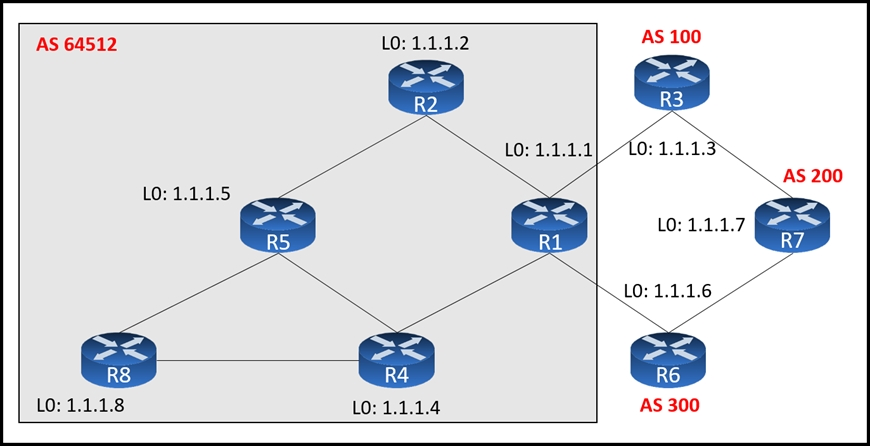Correct Answer: CTo restore reachability across all networks, the iBGP routers R4 and R5 must be configured as route reflectors. In this network, R1 is an edge router and using it as a route reflector is not recommended. Configuring R4 as a route reflector with its clients, which include R1, R5, and R8, will ensure that all loopback addresses are advertised correctly. Additionally, R5 should be a route reflector with R2 as its client to ensure that routes from R2 are properly advertised. This setup avoids potential issues with route reflection and ensures full reachability within the AS. Therefore, configuring R4 and R5 as route reflectors is the correct approach.
